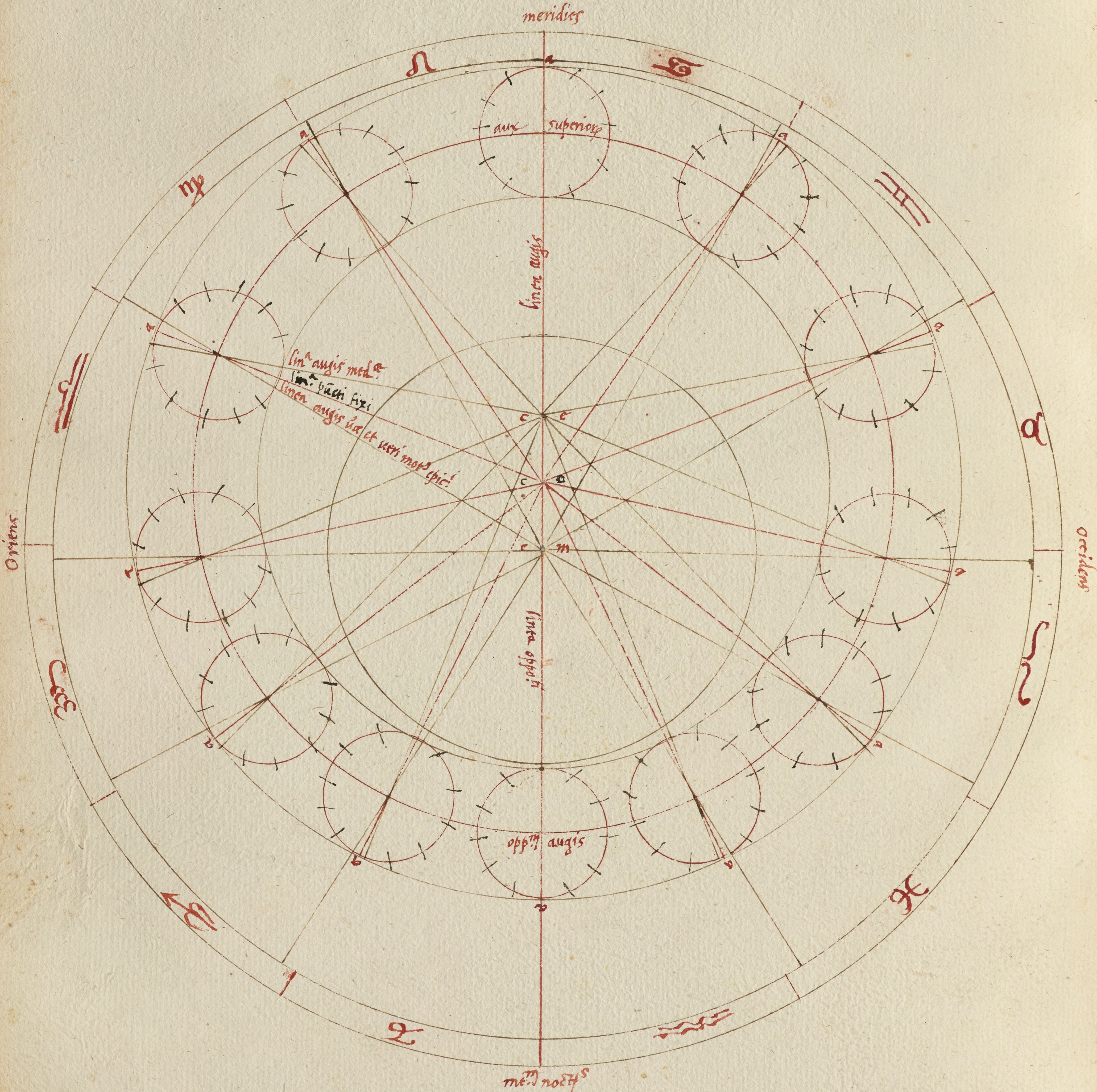Sensing
Astronomical manuscripts are a unique heritage transmitting to us the effort and intelligence of past scientists seeking to understand celestial phenomena. These manuscripts are also very complex and peculiar objects with which any person curious of the astronomy of the past needs to be familiar. In this section you will explore through four different trails some of the most important features of manuscripts. You will progressively discover how medieval manuscripts are completely different objects than the modern industrially printed book that we are accustomed to since the second half of the 19th century in Europe. And you will also understand how medieval astronomers took advantage of the manuscripts to develop their science.
Touching the manuscript
Manuscripts are first of all material objects now kept with great care in patrimonial libraries. In this trail you will discover what manuscripts are as material objects constituted with paper or parchment, wood, leather and metal. You will discover how in the course of their longlife different accidents can occur to them, alter their organization and content etc. All of these aspects are fundamental to understanding the development of any intellectual medieval discipline because manuscripts are the primary media through which authors and scientists could elaborate and communicate their ideas.
Typical manuscripts
Each manuscript is an individual somehow by construction, however in a similar way that in a forest all the trees are different but some trees belong to the same species it is possible to define different families of manuscripts. We have selected some manuscripts for this exhibition especially because they could be good examples of the main families of manuscripts that we find in the Alfonsine tradition. You will discover these manuscripts in this trail.
Seeing the manuscript
Manuscripts are not only objects to be read, they are objects to be seen. Copists, illuminators, and over artists participating along with astronomers to the elaboration of astronomical manuscripts often had a clear awareness of the importance of the visual organization of the manuscript on a global level and at the level of the page. This is particularly true for lavish presentation manuscripts but is also the case for less visually attractive student manuscripts which nonetheless are organized with some precision. In this trail you are going to be introduced to the art of looking at astronomical manuscripts and gathering different historical information from this visual analysis.
Exceptional manuscript
This trail will guide through a series of manuscripts which are exceptional and outstanding for a reason or another: because they are linked to a key moment or astronomer in the history of Alfonsine astronomy, because they are beautiful, because they have a unique content, because they have an exceptional material format…


